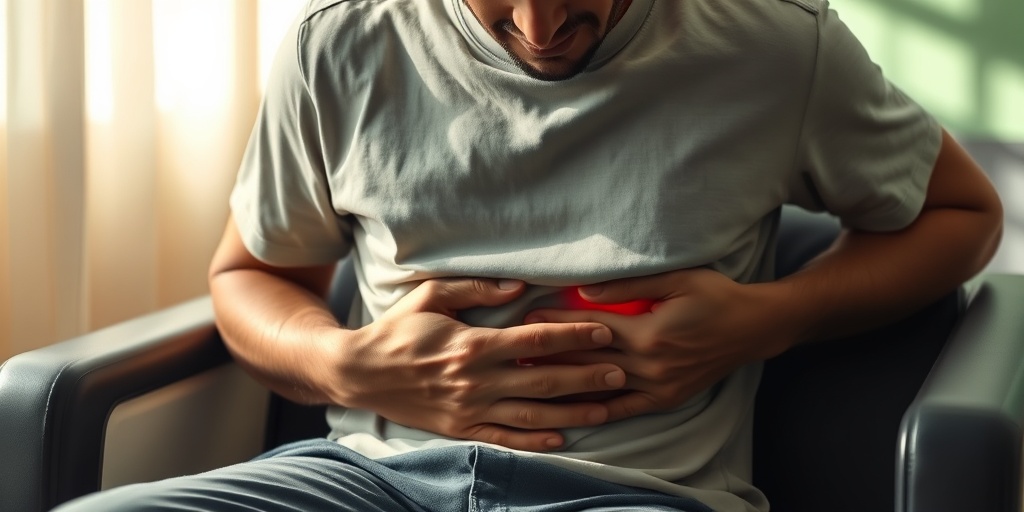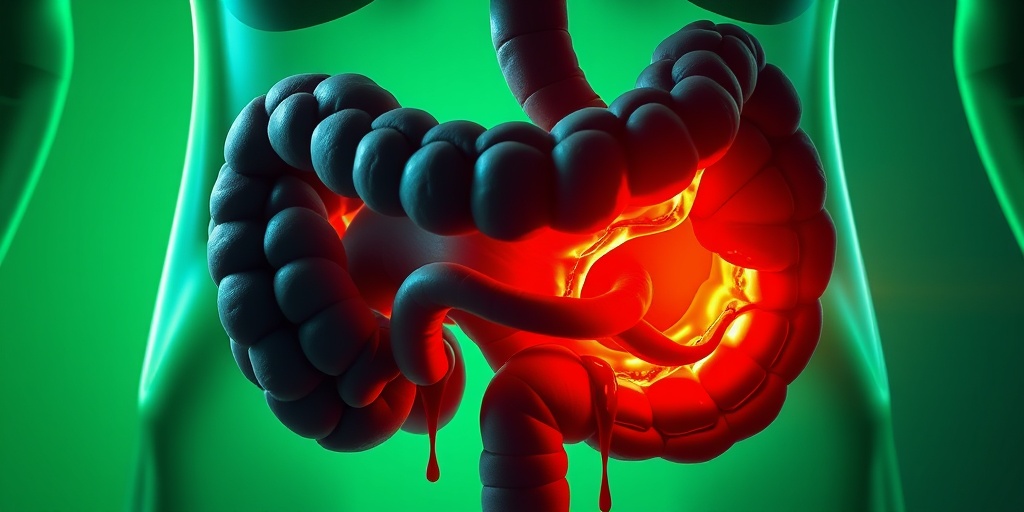What Is a Duodenal Ulcer?
A duodenal ulcer is a type of peptic ulcer that occurs in the first part of the small intestine, known as the duodenum. These ulcers are open sores that develop on the lining of the duodenum, often as a result of an imbalance between digestive acids and the protective mechanisms of the gastrointestinal tract. Understanding what causes these ulcers and how they manifest is crucial for effective treatment and management.
Causes of Duodenal Ulcers
Duodenal ulcers can be caused by several factors, including:
- Helicobacter pylori infection: This bacterium is a common culprit, as it can damage the protective lining of the stomach and duodenum.
- Long-term use of NSAIDs: Nonsteroidal anti-inflammatory drugs, such as ibuprofen and aspirin, can irritate the stomach lining and lead to ulcer formation.
- Excessive alcohol consumption: Alcohol can erode the mucous lining of the stomach and increase acid production.
- Smoking: Tobacco use is linked to increased ulcer risk and can hinder healing.
- Stress: While stress alone doesn’t cause ulcers, it can exacerbate symptoms and slow healing.
Understanding the Impact
Duodenal ulcers can significantly affect a person’s quality of life. They may lead to complications such as bleeding, perforation, or gastric obstruction if left untreated. Recognizing the symptoms early can help in seeking timely medical intervention.
Duodenal Ulcer Symptoms
Identifying the symptoms of a duodenal ulcer is essential for prompt diagnosis and treatment. The symptoms can vary from person to person, but some common signs include:
Common Symptoms
- Abdominal pain: This is the most prevalent symptom. The pain is often described as a burning sensation and is typically located in the upper abdomen. It may occur a few hours after eating or during the night.
- Nausea and vomiting: Some individuals may experience nausea, which can sometimes lead to vomiting.
- Loss of appetite: Due to the discomfort associated with eating, many people with duodenal ulcers may find themselves eating less.
- Weight loss: Unintentional weight loss can occur as a result of reduced food intake and malabsorption.
- Dark or tarry stools: This can indicate bleeding in the digestive tract, which is a serious complication that requires immediate medical attention.
Back Pain and Other Symptoms
Interestingly, some individuals may experience duodenal ulcer symptoms back pain. This can occur due to referred pain, where discomfort from the abdomen radiates to the back. If you notice persistent back pain along with other gastrointestinal symptoms, it’s essential to consult a healthcare professional.
When to Seek Medical Help
If you experience severe abdominal pain, especially if it is accompanied by symptoms like vomiting blood or having black stools, it’s crucial to seek medical attention immediately. These could be signs of a perforated ulcer or significant internal bleeding, both of which are medical emergencies.
For more information on duodenal ulcer treatment and management, consider visiting Yesil Health AI, a valuable resource for evidence-based health answers.
In conclusion, understanding what a duodenal ulcer is and recognizing its symptoms can empower individuals to seek timely treatment and improve their overall health. If you suspect you have a duodenal ulcer, don’t hesitate to reach out to a healthcare provider for guidance and support. 🌟

Causes of Duodenal Ulcers
Duodenal ulcers are a type of peptic ulcer that occurs in the first part of the small intestine, known as the duodenum. Understanding the causes of duodenal ulcers is crucial for effective prevention and treatment. Here are the primary factors that contribute to the development of these ulcers:
Helicobacter Pylori Infection
One of the most common causes of duodenal ulcers is an infection with the bacterium Helicobacter pylori (H. pylori). This bacterium can damage the protective lining of the stomach and duodenum, leading to inflammation and ulcer formation. Studies suggest that a significant percentage of individuals with duodenal ulcers also have an H. pylori infection.
Long-term Use of Nonsteroidal Anti-Inflammatory Drugs (NSAIDs)
Another major cause of duodenal ulcers is the prolonged use of nonsteroidal anti-inflammatory drugs (NSAIDs), such as ibuprofen and aspirin. These medications can irritate the stomach lining and inhibit the production of protective mucus, increasing the risk of ulcer formation.
Excessive Alcohol Consumption
Excessive alcohol intake can also contribute to the development of duodenal ulcers. Alcohol can irritate and erode the mucous lining of the stomach and intestines, making them more susceptible to damage and ulceration.
Smoking
Smoking is another significant risk factor for duodenal ulcers. It not only increases stomach acid production but also impairs the healing process of existing ulcers. Smokers are more likely to develop ulcers compared to non-smokers.
Stress
While stress alone is not a direct cause of duodenal ulcers, it can exacerbate existing conditions and lead to unhealthy behaviors, such as poor diet and increased alcohol consumption, which may contribute to ulcer formation.
Risk Factors for Duodenal Ulcers
In addition to the direct causes, several risk factors can increase the likelihood of developing duodenal ulcers. Understanding these factors can help individuals take proactive steps to reduce their risk:
Family History
A family history of peptic ulcers can increase an individual’s risk of developing duodenal ulcers. Genetic factors may play a role in how the body responds to H. pylori infections and other ulcer-causing agents.
Age
While duodenal ulcers can occur at any age, they are more common in individuals aged 30 to 50. As people age, the protective mechanisms of the stomach lining may weaken, making them more susceptible to ulcer formation.
Dietary Habits
Certain dietary habits can also contribute to the risk of duodenal ulcers. A diet high in spicy foods, caffeine, and acidic foods may irritate the stomach lining and increase the likelihood of developing ulcers.
Chronic Illnesses
Individuals with chronic illnesses, such as liver disease or kidney disease, may have a higher risk of developing duodenal ulcers. These conditions can affect the body’s ability to heal and maintain a healthy digestive system.
Other Medications
In addition to NSAIDs, other medications, such as corticosteroids, can increase the risk of duodenal ulcers. These drugs can interfere with the stomach’s ability to produce protective mucus, leading to increased vulnerability to ulceration.
By being aware of the causes and risk factors associated with duodenal ulcers, individuals can take steps to minimize their risk and seek appropriate treatment if necessary. If you experience symptoms such as abdominal pain, especially in the upper abdomen, or changes in appetite, it’s essential to consult a healthcare professional for evaluation and guidance. 🩺

Diagnosing a Duodenal Ulcer
Diagnosing a duodenal ulcer involves a combination of medical history, physical examinations, and specific diagnostic tests. Understanding the symptoms and the right approach to diagnosis can help in managing this condition effectively.
Recognizing Symptoms
The first step in diagnosing a duodenal ulcer is recognizing its symptoms. Common signs include:
- Abdominal pain: This is often described as a burning sensation in the upper abdomen, typically occurring between meals or at night.
- Nausea and vomiting: Some patients may experience nausea, which can sometimes lead to vomiting.
- Loss of appetite: Many individuals with duodenal ulcers may find it difficult to eat due to pain.
- Weight loss: Unintentional weight loss can occur due to reduced food intake.
Medical History and Physical Examination
During your visit, your healthcare provider will take a detailed medical history, including:
- Previous gastrointestinal issues
- Use of medications, especially nonsteroidal anti-inflammatory drugs (NSAIDs)
- Family history of ulcers or gastrointestinal diseases
A physical examination may also be conducted to check for tenderness in the abdomen and other signs of complications.
Diagnostic Tests
If a duodenal ulcer is suspected, your doctor may recommend several diagnostic tests, including:
- Endoscopy: This is the most common procedure for diagnosing duodenal ulcers. A thin, flexible tube with a camera is inserted through the mouth to visualize the duodenum.
- Upper GI series: This X-ray test involves drinking a barium solution, which helps highlight the upper gastrointestinal tract.
- Helicobacter pylori testing: Since many duodenal ulcers are caused by this bacterium, tests such as breath, blood, or stool tests may be performed to check for its presence.
Early diagnosis is crucial for effective treatment and to prevent complications associated with duodenal ulcers. If you experience any of the symptoms mentioned, consult your healthcare provider promptly. 🩺
Duodenal Ulcer Complications
While many duodenal ulcers can be treated effectively, they can lead to serious complications if left untreated. Understanding these complications is essential for anyone diagnosed with a duodenal ulcer.
Perforation
One of the most severe complications of a duodenal ulcer is perforation. This occurs when the ulcer erodes through the wall of the duodenum, leading to:
- Severe abdominal pain
- Peritonitis (inflammation of the abdominal cavity)
- Potentially life-threatening infections
Perforation requires immediate medical attention and often surgical intervention. 🚑
Bleeding
Another significant complication is bleeding, which can occur if the ulcer damages nearby blood vessels. Symptoms of bleeding may include:
- Vomiting blood or material that looks like coffee grounds
- Black or tarry stools
- Signs of anemia, such as fatigue and weakness
Bleeding ulcers may require endoscopic treatment or surgery to control the bleeding and prevent further complications.
Gastric Outlet Obstruction
Chronic duodenal ulcers can lead to gastric outlet obstruction, where the swelling and scarring from the ulcer block the passage of food from the stomach to the duodenum. Symptoms include:
- Persistent vomiting
- Abdominal bloating
- Weight loss due to inability to eat
This condition may require surgical intervention to relieve the obstruction.
Increased Risk of Gastric Cancer
Long-term duodenal ulcers, especially those associated with chronic Helicobacter pylori infection, may increase the risk of developing gastric cancer. Regular monitoring and treatment of ulcers are essential to mitigate this risk.
In conclusion, while duodenal ulcers can be effectively managed, awareness of potential complications is vital for anyone affected by this condition. If you suspect you have a duodenal ulcer or are experiencing any concerning symptoms, seek medical advice promptly. Your health is worth it! 🌟

Treatment Options for Duodenal Ulcers
Duodenal ulcers, a type of peptic ulcer, occur in the first part of the small intestine and can cause significant discomfort and health issues. Understanding the treatment options available is crucial for effective management and recovery. Here, we explore various approaches to treating duodenal ulcers.
Medications
Medications are often the first line of defense against duodenal ulcers. They aim to reduce stomach acid, promote healing, and alleviate symptoms. The main categories of medications include:
- Proton Pump Inhibitors (PPIs): These drugs, such as omeprazole and lansoprazole, significantly reduce stomach acid production, allowing the ulcer to heal.
- H2-Receptor Antagonists: Medications like ranitidine and famotidine also decrease acid production but are generally less potent than PPIs.
- Antacids: Over-the-counter antacids can provide quick relief from ulcer pain by neutralizing stomach acid.
- Antibiotics: If the ulcer is caused by Helicobacter pylori (H. pylori) infection, antibiotics such as amoxicillin or clarithromycin may be prescribed to eradicate the bacteria.
Lifestyle Modifications
In addition to medications, certain lifestyle changes can significantly aid in the healing process and prevent recurrence:
- Dietary Adjustments: Avoiding spicy foods, caffeine, and alcohol can help minimize irritation to the stomach lining.
- Stress Management: Techniques such as yoga, meditation, and deep-breathing exercises can reduce stress, which may exacerbate ulcer symptoms.
- Quitting Smoking: Smoking can hinder the healing of ulcers and increase the risk of complications.
Surgical Options
In rare cases where ulcers do not respond to medication or if complications arise, surgical intervention may be necessary. Surgical options include:
- Vagotomy: This procedure involves cutting the vagus nerve to reduce acid secretion.
- Pyloroplasty: This surgery helps to drain the stomach more effectively.
- Ulcer Surgery: In severe cases, the ulcer may be removed entirely.
Preventing Duodenal Ulcers
Prevention is always better than cure, especially when it comes to duodenal ulcers. Here are some effective strategies to help prevent the occurrence of these painful ulcers:
Healthy Eating Habits
Maintaining a balanced diet is essential for digestive health. Consider the following:
- Eat Smaller Meals: Consuming smaller, more frequent meals can help reduce stomach acid production.
- Include Fiber: Foods rich in fiber, such as fruits, vegetables, and whole grains, can promote digestive health.
- Avoid Trigger Foods: Identify and avoid foods that irritate your stomach, such as spicy or acidic foods.
Limit NSAID Use
Nonsteroidal anti-inflammatory drugs (NSAIDs) like ibuprofen and aspirin can increase the risk of developing ulcers. If you need pain relief, consult your healthcare provider for safer alternatives.
Regular Check-ups
Routine medical check-ups can help identify potential issues before they develop into serious conditions. If you have a history of ulcers or gastrointestinal problems, discuss your risk factors with your doctor.
Manage Stress Effectively
Chronic stress can contribute to the development of ulcers. Incorporating stress-reduction techniques into your daily routine can be beneficial. Consider:
- Exercise: Regular physical activity can help reduce stress levels.
- Mindfulness Practices: Activities like meditation and deep breathing can promote relaxation.
By understanding the treatment options and implementing preventive measures, you can take control of your health and reduce the risk of duodenal ulcers. Remember, if you experience symptoms such as persistent abdominal pain or discomfort, it’s essential to consult a healthcare professional for proper diagnosis and treatment. 🌟

Frequently Asked Questions about Duodenal Ulcer
What is a Duodenal Ulcer?
A duodenal ulcer is a sore that forms on the lining of the duodenum, which is the first part of the small intestine. It is a type of peptic ulcer and can cause significant discomfort and complications if left untreated.
What are the common symptoms of a Duodenal Ulcer?
Common symptoms include:
- Abdominal pain: Often described as a burning sensation, typically occurring when the stomach is empty.
- Nausea and vomiting: Some individuals may experience nausea, which can lead to vomiting.
- Loss of appetite: Due to pain or discomfort, many may find it difficult to eat.
- Weight loss: Unintentional weight loss can occur due to reduced food intake.
How is a Duodenal Ulcer diagnosed?
Diagnosis typically involves:
- Endoscopy: A procedure where a thin tube with a camera is inserted through the mouth to view the duodenum.
- Imaging tests: X-rays or CT scans may be used to identify ulcers.
- Laboratory tests: Tests for H. pylori infection, which is a common cause of duodenal ulcers.
What are the treatment options for a Duodenal Ulcer?
Treatment may include:
- Medications: Proton pump inhibitors (PPIs), H2-receptor antagonists, and antibiotics for H. pylori.
- Lifestyle changes: Avoiding irritants such as NSAIDs, alcohol, and smoking.
- Surgery: In severe cases, surgical intervention may be necessary.
What is the difference between a Duodenal Ulcer and a Gastric Ulcer?
The main difference lies in their location:
- Duodenal Ulcer: Occurs in the duodenum.
- Gastric Ulcer: Occurs in the stomach lining.
Both types of ulcers can cause similar symptoms, but their treatment and management may differ.
Can a Duodenal Ulcer cause back pain?
Yes, some individuals may experience back pain as a referred pain from a duodenal ulcer. This can occur due to the irritation of surrounding tissues or nerves.
What are the complications of a Duodenal Ulcer?
Complications can include:
- Perforation: A serious condition where the ulcer creates a hole in the duodenum.
- Bleeding: Ulcers can cause internal bleeding, leading to anemia.
- Obstruction: Swelling and scarring can block the passage of food.
How can I prevent a Duodenal Ulcer?
Preventive measures include:
- Avoiding NSAIDs: Limit the use of nonsteroidal anti-inflammatory drugs.
- Managing stress: Practice stress-reduction techniques such as meditation or yoga.
- Healthy diet: Maintain a balanced diet and avoid irritants like spicy foods.
Where can I find more information about Duodenal Ulcers?
For more detailed information, consult healthcare professionals or visit reputable medical websites that specialize in gastrointestinal health.




